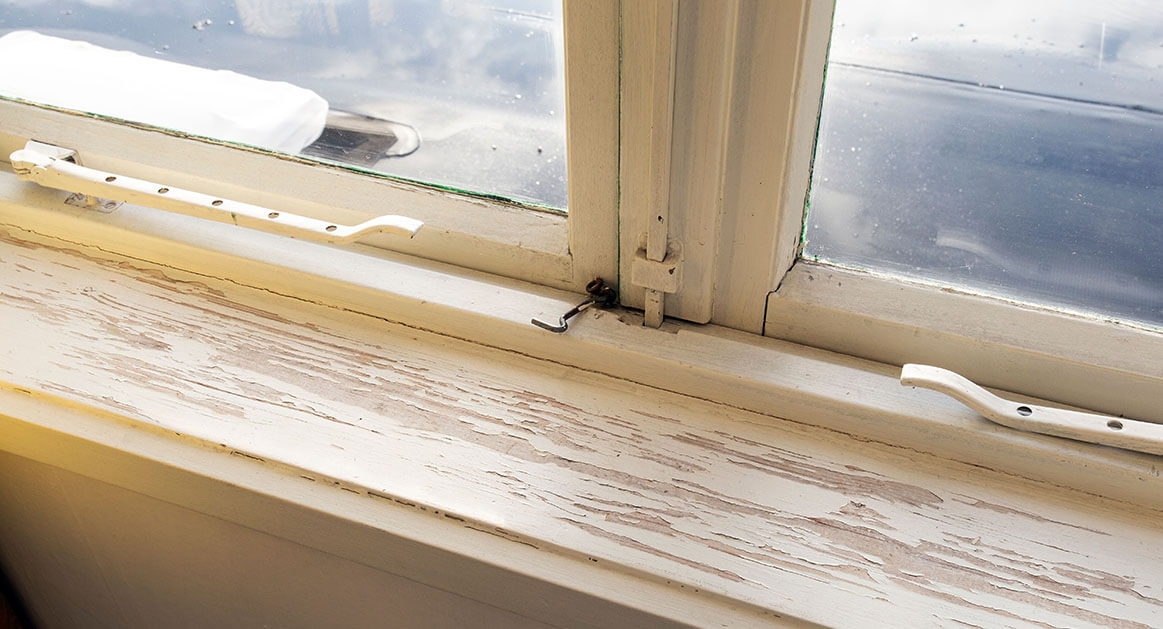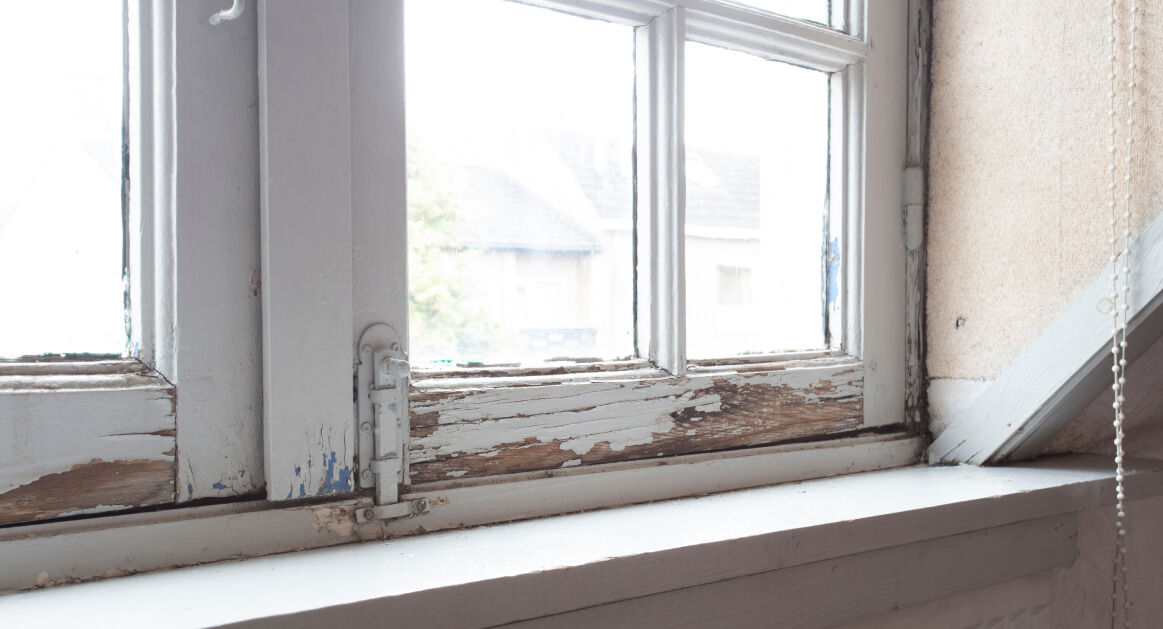Question: I live with my wife and our 2 year old child in a two-family house in New York State. My child was recently diagnosed with lead poisoning in a routine lead screening test.
When we moved into the house the landlord assured me and my wife that the apartment which we were about to rent was free of lead paint. The landlord gave us a lease that stated at the top in bold letters “Standard Form New York Lease”. Only I signed the lease, though my wife was very much involved in the leasing of the apartment. It was only by chance that I signed the lease and that she did not.
There were no written lead based paint disclosures in the content of the lease nor on any riders to the lease.
There was no cautionary language of any kind explaining the hazards of lead based paint. The landlord did not provide us with any pamphlet related to protecting our family from leaded paint. The home in which we live was built before 1978. Soon after moving in, paint began chipping in various locations in our home. I brought this to the attention of the landlord.
Then came the news from our child’s pediatrician that our young child had an elevated blood-lead level. After our child’s diagnosis of lead poisoning, the Department of Health came to our apartment and conducted comprehensive XRF testing on the walls and other surfaces in our apartment. They confirmed that many areas on the walls, window sills and other friction surfaces contained illegally high concentrations of lead paint.
Our child played in the locations of the lead paint violations. The Department of Health ascribes the poisoning to the leaded paint determined to exist in our apartment.
The landlord is now angry and alarmingly threatening us with eviction. He has been ordered to fix the apartment at significant cost to him.
I am concerned about my child and the fact that my wife may also have ingested lead contaminated dust in the apartment.
The landlord has said that the lead poisoning was our fault! What are our legal rights?
Answer:
You and your child have a variety of legal remedies available under New York State and Federal Laws and applicable regulations. We will address some remedies under the Residential Lead-Based Paint Hazard Reduction Act (RLPHRA).
BACKGROUND OF FEDERAL LEGISLATION
The United States Congress determined that “low-level lead poisoning is widespread among American children, afflicting as many as 3,000,000 children under age 6 with minority and low-income communities disproportionately affected” and “the health and development of children living in as many as 3,800,000 American homes is endangered by chipping or peeling lead paint, or excessive amounts of lead-contaminated dust in their homes”.
In order to ameliorate this “affliction”, Congress enacted the Residential Lead-Based Paint Hazard Reduction Act and thus created a mechanism which would protect and reduce the exposure of children to the vagaries of lead-based paint poisoning.
The legislation pronounced several tangible objectives, including to:
- “eliminate lead-based paint hazards in all housing as expeditiously as possible”;
- “encourage effective action to prevent childhood lead-poisoning by establishing a workable framework for lead-based paint hazard evaluation and reduction”;
- “educate the public concerning the hazards and sources of lead-based paint poisoning and steps to reduce and eliminate such hazards.”
(42 USC Section 4851a[1],[3],[7]).”[1]
In pursuit of these remedial objectives, the provisions of the Residential Lead-Based Paint Hazard Reduction Act (RLBPHRA), require that a landlord/lessor(s) provide to each tenant/lessee certain lead-based paint disclosures. The legislation also directed that the United States Environmental Protection Agency (EPA) promulgate regulations for mandating disclosure of lead-based paint hazards to lessees in target housing at the time that an apartment is being offered for lease.
The EPA promulgated such regulations related to disclosures designed to control the exposure by persons who live in “target” residential housing (generally housing built before 1978) from the hazards of lead based paint.
The regulations require comprehensive disclosures including the following:
The person or entity leasing the property is required to provide the tenant (at the time of the lease) with an EPA- approved lead hazard information pamphlet. The pamphlet which must be given to the prospective tenant may be the EPA document entitled “Protect Your Family From Lead In Your Home (EPA #747-K-94-001) or a similar document of similar content which may be approved by the State in which the residence is located. (This pamphlet may be downloaded on the web by going to the following web page www.epa.gov/lead/protect-your-family-lead-your-home).
The pamphlet should have been provided by the landlord at the time of entering into the new lease for the rental of residential housing which was built before 1978 (target housing).
The pamphlet is very informative and provides comprehensive and useful information on the potential hazards of lead based paint.
Armed with such data, a tenant such as yourself could have been made aware that many homes built before 1978 have lead based paint on various interior surfaces.
The pamphlet contains much information including the following:
- How lead gets into the body (particularly significant in children who play on floors and near radiators and windows);
- How the ingestion of lead may affect the health of a child or other tenant in an apartment;
- What could be done to protect your family from lead-based paint hazards;
- Where you could look in order to find more information on lead-based paint hazards. (See https://www.epa.gov/sites/production/files/2014-02/documents/lead_in_your_home_brochure_land_b_w_508_easy_print_0.pdf
Had your landlord complied with this required disclosure, you would have been made aware that the form-lease that he used also violated the law.
The pamphlet would also have given you clear information about the hazards of lead contaminated dust and the precautions that could have been taken in order to prevent hazards from developing and endangering the health of your child.
In short, it would have empowered you with data and information which could have been utilized to safeguard your child.
This important knowledge may have enabled you to achieve the intendment of the law, namely, the elimination of lead paint hazards in your apartment and the protection of your child from the lead poisoning which he ultimately suffered.
Providing this mandated pamphlet on lead paint poisoning was not merely a ministerial act without significance or importance.
The landlord was also required to disclose to you the presence and location of any known lead based paint or lead based paint hazards. (See EPA regulations 40 C.F.R. Sections 745.100 – 745.119.)
Your landlord was required to disclose any information available including providing any records related to his conclusion that lead based paint was not present.
He was required to disclose and provide you with any records or reports available to him reflecting on the issue of lead based paint or lead based paint hazards including in common areas of the building.
This is particularly important given the fact that your landlord stated to you that there were no lead based paint hazards in the apartment. He was required to give you the documents upon which he based such a statement.
Your lease also violated the federal disclosure requirements which required the landlord to provide a “Lead Warning Statement” containing the following required language:
“Housing built before 1978 may contain lead-based paint. Lead from paint, paint chips and dust can pose health hazards if not managed properly. Lead exposure is especially harmful to young children and pregnant women. Before renting pre-1978 housing, lessors must disclose the presence of lead-based paint and/or lead-based paint hazards in the dwelling. Lessees must also receive a federally approved pamphlet on lead poisoning prevention.”
This Lead Warning Statement is available on the EPA website at https://www.epa.gov/sites/production/files/documents/lesr_eng.pdf
In leasing situations, many landlords still violate this provision of the law. In your case, the violation of the law may have resulted in the lead poisoning of your child and the exposure of your wife to lead contaminated dust. What is clear is that the ultimate purpose of this law is the proactive prevention of lead poisoning through heightened awareness of the dangers that one confronts in housing built before 1978 and the disclosure of any known hazards.
REMEDIES UNDER THE RESIDENTIAL LEAD-BASED PAINT HAZARD REDUCTION ACT
What are the penalties imposed upon a landlord for violating the federal lead-based paint disclosure requirements and who has standing to sue for such violations?
The statute provides as follows:
“(3) Civil Liability. Any person who knowingly violates the provisions of this section shall be jointly and severally liable to the purchaser or lessee in an amount equal to 3 times the amount of damages incurred by such individual”.
“(4) Costs. In any civil action brought for damages pursuant to paragraph (3), the appropriate court may award court costs to the party commencing such action, together with reasonable attorney fees and any expert witness fees, if that party prevails.”
The statute expressly grants what is called a private right of action and imposes liability against the lessor in favor of the lessee “for damages incurred by such individual” for the knowing violation of the terms of the law and regulations.
A private right of action is the legal standing to bring a lawsuit for relief or damages before a legal tribunal.
The statute also provides that the person violating this law is potentially liable to the lessee and the lessee may recover treble (triple) damages against the violator of this law for “knowing” violation.
The court may also impose criminal sanctions and monetary penalties. In a recent case in Niagara County, New York, a realtor pleaded guilty to a knowing violation of the disclosure provisions as they apply to a real estate agent in a transfer of real estate. The realtor was sentenced to time served (maximum is one year and it is unclear as to the amount of time the realtor actually spent in jail) a fine of $1,000 and $53,000 in restitution. https://www.justice.gov/usao-wdny/pr/realtor-pleads-guilty-violating-lead-based-paint-disclosure-rules
Despite the imposing and broad scope of statutory remedies, enforcement is infrequent and landlords appear to violate these laws with an unfortunate frequency. This may be in part due to multiple factors.
One factor may due to the circumscribed standing to sue which may be implied by the language of the law.
STANDING TO SUE FOR VIOLATION OF RESIDENTIAL LEAD-BASED PAINT HAZARD REDUCTION ACT (RLPHRA)
In several New York State cases, it has been held that standing to sue under this law is circumscribed and limited to the specific person who signed the lease. Following such decisions, the scope of recovery for damages under this law (as distinguished from other state and city laws) may be limited to damages suffered by the specific individual who happened to have executed the lease.
The practical impact of this restrictive construction of the law limits the potential recovery even if knowing violation and foreseeable damage to persons living in the apartment is proven.
The bedeviling impact of such a construction of this law may be illustrated by several fairly common scenarios.
Take the case of a husband and wife who enter into a lease on an apartment in a two (2) family apartment building in New York State as an example. Both husband and wife are working and so they each sign personal guarantees and each provide income verification to ensure that the rent will have a source for payment. The husband signs the actual lease and the wife does not. If the wife becomes pregnant and due to lead hazards in the apartment ingests lead-based paint dust due, at least in part, to her lack of awareness of the hazards of lead-based paint in the apartment or the knowing failure to disclose known hazards, under this construction of the statute she could not recover the treble damages provided under this law. It becomes the fortuitous good fortune of the offending landlord that she was not the person who actually signed the lease.
Another very common scenario is when a parent signs the lease and a child or grandchild suffers lead poisoning due to the knowing violation of the landlord in failing to comply with this statute. New York courts have held that the child, not having been a signatory to the lease, may not recover the treble damages, costs and attorney fees related to the violation of this federal statute despite the fact the statute was enacted to protect that very class of individuals from harm. This would be the case whether or not the child was actually listed as a tenant in the lease itself.
THE NEW YORK STATE CASES ON THE RESIDENTIAL LEAD-BASED PAINT HAZARD REDUCTION ACT
Given the stated intent of the legislation to “eliminate lead-based paint hazards in all housing as expeditiously as possible”, “encourage effective action to prevent childhood lead-poisoning by establishing a workable framework for lead-based paint hazard evaluation and reduction” and “educate the public concerning the hazards and sources of lead-based paint poisoning and steps to reduce and eliminate such hazards”, and the congressional intent of remediating the “affliction” of lead poisoning, could such a restrictive construction of standing to sue have been the intendment of Congress?
An analysis of the New York cases reveals just such a construction.
THE CASE OF SKERRITT VS. BACH
In Skerritt v. Bach, 23 A.D. 3d 1080, 805 NYS2d 213, 805 NYS2d 213 (4th Dept 2005), James Skerritt purchased a home from Michael J. Beaudette. No lead disclosure was given by the seller. Subsequent to the purchase, the purchaser’s three year old son, Brandon Skerritt, fell victim to lead-based paint poisoning in the purchased house. An action was commenced seeking damages for violation of the disclosure requirements of the Residential Lead-Based Paint Hazard Reduction Act (RLBPHRA). It was alleged by James, suing on behalf of his son, that Beaudette had knowingly failed to disclose known lead-based paint hazards in violation of the law and that such failure to disclose was a proximate cause of Brandon’s suffering lead poisoning.
The court held that young Brandon did not have standing to sue for personal injuries suffered as a result of being lead poisoned by the lead based paint in the purchased premises because the language of the statute designated “the lessee or purchaser” as the person “intended to be protected” by the statute. The court held that “the preeminent canon of statutory interpretation requires [courts] to ‘presume that [the] legislature says in a statute what it means and means in a statute what it says there.’…Thus [a court’s] inquiry begins with the statutory text, and ends there as well if text is unambiguous” (BedRoc Ltd. V. United States, 541 U.S. 176,183, 124 S.Ct.1587, 158 L.Ed.2d 338 [2004]). The court found that there was no implied standing to sue on behalf of the poisoned child despite the fact that Congress found “that the presence of lead-based paint hazards is particularly hazardous to children under the age of six (see 42 USC Section 4851)” as the court determined that there is no implied right of action on behalf of the injured child. The court stated that the child was not in “the zone of interest protected by the Act”.
The Supreme Court, Appellate Division Second Department followed the same basic reasoning in a case entitled Brown v. Maple3, LLC, 88 A.D.3d 224, 928 NYS2d 740 (2d Dept 2011) when they dismissed the cause of action of a child who sued alleging violation of the provisions of the Residential Lead-Based Paint Hazard Reduction Act of 1992 (RLBPHRA). The court found that the Act expressly limited a cause of action under its provisions to the “purchaser or lessee”.
The same reasoning was followed by the Supreme Court Appellate Division Second Department in a case entitled Michaud v. Lefferts 750, LLC, 87 A.D.3d 990, 929 NYS2d 612 (2d Dept 2010) where the court stated that the subject Act granted standing solely to a “purchaser or lessee of the subject apartments”.
While similar reasoning has been applied by various federal courts, at least one federal court has granted standing to a child.
In McCormick v. Kissel, 458 F.Supp.2d 944 (S.D. Ind. 2006), the court held that a child does have standing to sue under RLBPHRA, reasoning that the intent of congress was to protect children from lead poisoning and thus they were within the “zone of interests” which the Act intended to protect.
Similarly, in another decision entitled Cudjoe v. Department of Veterans Affairs, 426 F.3d 241 (3rd Cir. 2005) the United States Court of Appeals, Third Circuit (before Judges, Scirica, Alito, and Rosenn) appeared not to dismiss the potential of standing for a child of the lessee to sue for damages under RLBPHRA. The court stated that “we have held that a person without express statutory standing may still have standing to sue if the person meets the minimum requirements for Article III standing as well as the additional elements of prudential standing”.
This issue has thus been litigated with conflicting results.
THE FUTURE OF THE APPLICATION OF STANDING
The clear and unambiguous intent of the legislature in enacting the Act was to protect children from the scourge of lead-based paint poisoning. The fact that the center of gravity of the provisions of the law focused on disclosure requirements should not distract from the objectives of the Act which was to eliminate lead poisoning in housing in the United States. Children were the intended persons to be protected by the provisions of the Act.
The importance attached to this law can be seen in that the legislature expressly imposed criminal sanctions for knowing violation as well as providing a civil arsenal of a private right of action with treble damages.
The private right of action should be accorded meaning to encompass protections for those persons who the legislature pronounced as the intended beneficiaries of the law. Children poisoned as a result of violation are clearly those who are within the intended “zone of interest” of the law. The expansiveness of the application of standing should be guided by the elasticity which that “zone of interest” requires in order to achieve the objectives of the remedies provided in the Act.
A restrictive interpretation of this law may allow for many inequitable possibilities. One can envision a case where a parent who signed a lease recovers treble damages for derivative damages arising from the personal injuries suffered by their injured child, while the child himself or herself is excluded from standing to recover. Such a result could not have been intended. Nor would a limiting of the ambit of remedies to pecuniary losses be a proper interpretation of the meaning of the law.
The issue as to whether the legislature enacted a law to protect children but intended to deprive children of standing to sue appears to be a matter for much future litigation in the federal and state courts around the country.
[1] See also Brown v. Maple 3, LLC, 88 AD3d 224 (2d Dept 2011) citing the applicable statute.
We welcome your legal questions for topically relevant articles in the future. Feel free to compose a question – it may be addressed in future articles. Email Question
Free Case Evaluation
Fill Out The Form Below To Find Out If You Have A Case.
Thank you for contacting us. One of our colleagues will get back to you shortly.





